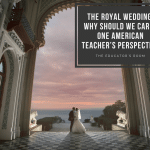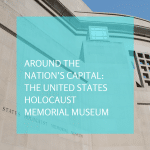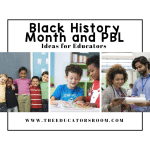How do educators balance teaching in an area of expertise while knowing that what they know might not be enough? Media scrutiny and traditional practice of being the “sage on stage” for determining necessary content coverage for standardized tests thwarts the better practice of modeling inquiry and discovery. Teachers worried about the uniformity of content focus more on the subjective argument of what information too cover instead of what is left out. Presenting content for United States history is rife with argument, which is fortunate. It led me to search out histories I had yet to uncover while modeling the questions I hoped to have my students develop.
Arguments considering content crucial to learning inevitably involve textbooks as a necessary crux to the matter. Textbooks afford all students a linear guideline to any given subject area. When I tried to divorce myself from textbooks, too many students felt as if they were swimming in a sea of content without a lifejacket. They couldn’t place solid footing on a base level of learning. Students with high absenteeism had difficulty catching up to a class. In a 1:1 iPad classroom with access to the world’s best resources, students were overwhelmed by infinite pathways to knowledge or were left stranded when technology crashed. Textbooks become encyclopedic sources to satisfy understanding but for teaching, they fall flat on transformative experiences if they are not used to evaluate and critique. Luckily, the right hero stepped into social media.
The Courage of Coby Dean-Burren, in a Washington Post article by Yanan Wang on October 5, caught my eye because he had done what we hope to observe students doing, questioning the validity of a source. Wang’s article, Workers’ or Slaves? captures the significance of a student’s critical eye. Coby had texted a photo of a colorful page in his ninth-grade McGraw-Hill World Geography textbook to his mother. In a section titled “Patterns of Immigration,” a speech bubble pointing to a U.S. map read: “The Atlantic Slave Trade between the 1500s and 1800s brought millions of workers from Africa to the southern United States to work on agricultural plantations.” Dean-Burren had the sense and the confidence to question the use of the word “worker” instead of slave as a form of revisionist history.
June 17, 2015, yet another mass shooting in a community in America was the prominent news event of the day. The Emanuel African Methodist Episcopal Church had been the target and nine attendants of a prayer meeting lost their lives. The tragedy first drew my attention to the survivors of the deceased who had the strength and faith to call for public messages of forgiveness. Then I was drawn to the building itself because until this moment I had never heard of this historic landmark of the oldest black congregations and the southern AME. Embarrassed to have missed this history because of an isolated childhood in northern Vermont, I thumbed through my collection of high school and college textbooks which afforded no mention either. What does it mean to those whose heroic stories are left out of textbooks? What are we arguing when we decide on teaching only those histories we already know? My resolve to teaching untold stories has a greater significance.
My bookclub randomly chose Sue Monk Kidd’s The Invention of Wings. Low and behold I found myself reading in awe of Denmark Vesey, a church founder of the AME and his involvement in 1822 with a planned slave revolt. Through fiction, a revisionist history gives a hero far more life than it would in a chapter summary of a textbook. The connection made for me by random reading was uncanny. In the author remarks, Sue admits a frustration for not knowing about the histories that surrounded her in South Carolina. Just as she gave them life in her story I came away wondering if I could inspire students to do the same. Not only would they evaluate the significance of adding the history of lost landmarks or figures like Denmark Vesey to textbooks but I could give them the option of creating a heroic interpretation for a lost figure of history. I’ve set up lessons like this before but not with so much at stake. Students need to know how to question the content that is put before them and they need to proud of that value.
An NPR series on 50 Great Teachers highlighted the work of Deborah Ball, an educator and Dean of Education at the University of Michigan. One quote about the methodology she follows for encouraging dialogue and problem solving stuck with me,
[fusion_builder_container hundred_percent=”yes” overflow=”visible”][fusion_builder_row][fusion_builder_column type=”1_1″ background_position=”left top” background_color=”” border_size=”” border_color=”” border_style=”solid” spacing=”yes” background_image=”” background_repeat=”no-repeat” padding=”” margin_top=”0px” margin_bottom=”0px” class=”” id=”” animation_type=”” animation_speed=”0.3″ animation_direction=”left” hide_on_mobile=”no” center_content=”no” min_height=”none”][bctt tweet=””And that’s the question we never ask in school,” Ball says. “We just give them all those right answers … we give them drawings that are already divided correctly, and we never stop to think – ‘huh, maybe they don’t really get this.'””]
I took an AP Summer Institute in St. Johnsbury, Vermont and discovered yet another overlooked document, “The Meaning of July Fourth for the Negro” by Frederick Douglas. Chagrinned, I had never read it, never heard of it. Reading an argument of how history is celebrated was transformative. Encouraged to search video recordings brought me to James Earl Jones reading it aloud with purpose and true power. I found myself questioning my own complacency and wondering, what arguments would they make for themselves upon reading this? Classroom practices must make time for discovery and discussion around looking at content more than once. They need to question and test what we ask them to know and to advocate for what they would promise to learn. Each year I give students links to the United States and British archives of World War I and templates for redesigning a textbook page. Some truly imaginative discoveries included: records of heroic dogs, war horses, divided families, unsung heroes and comic book art. Coby Dean-Burren’s story reminded me that I need to take that last crucial step and publish their findings, give ideas wings and the lost histories a voice.[/fusion_builder_column][/fusion_builder_row][/fusion_builder_container]





